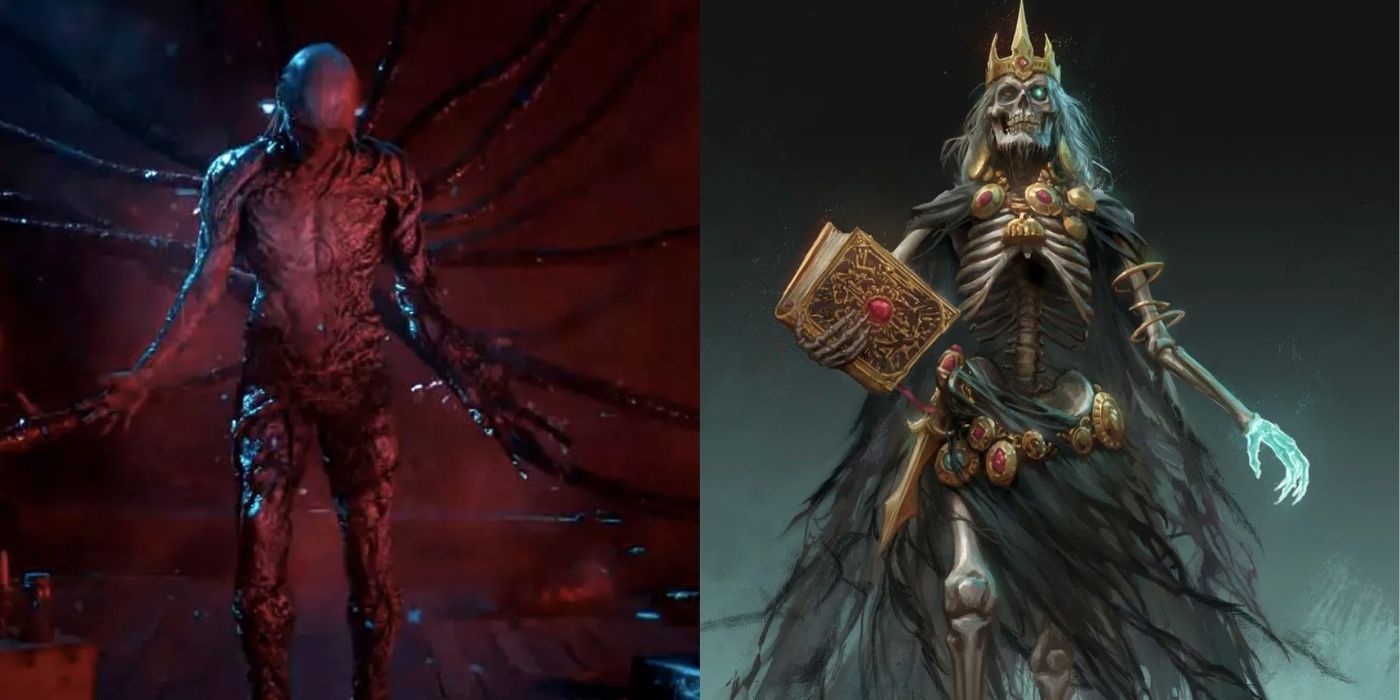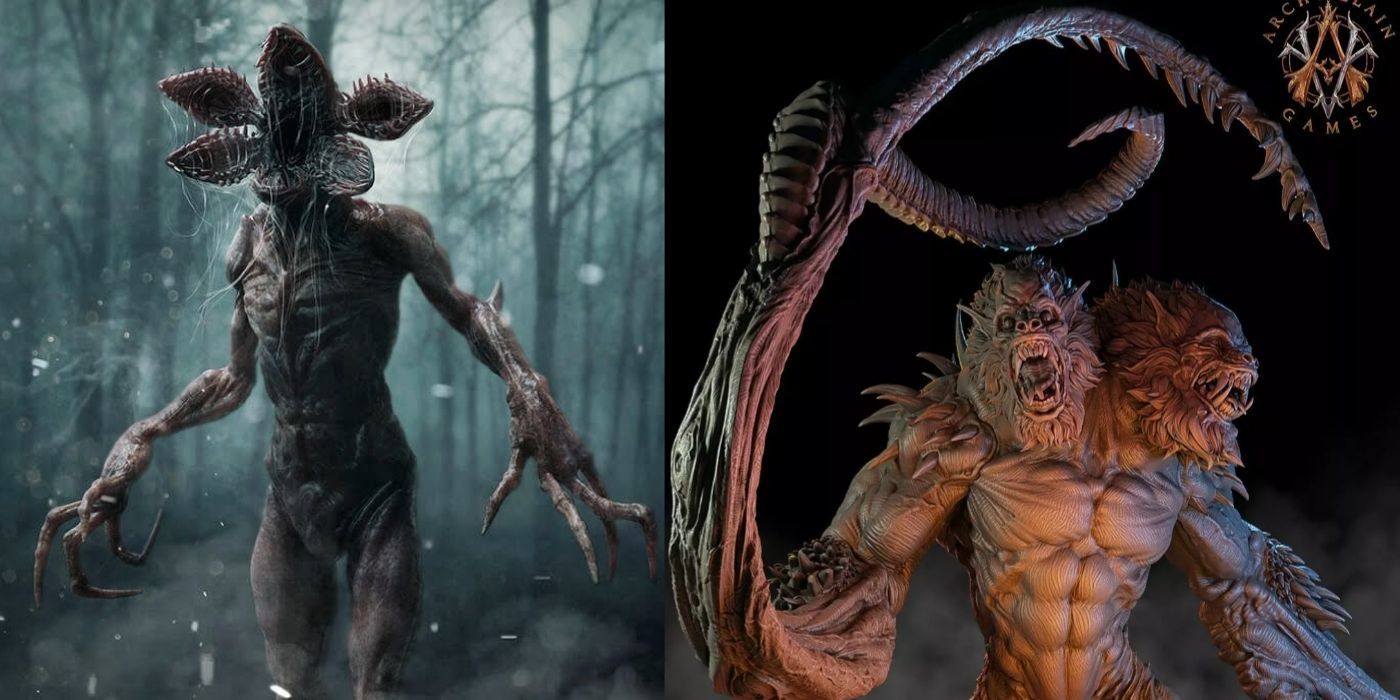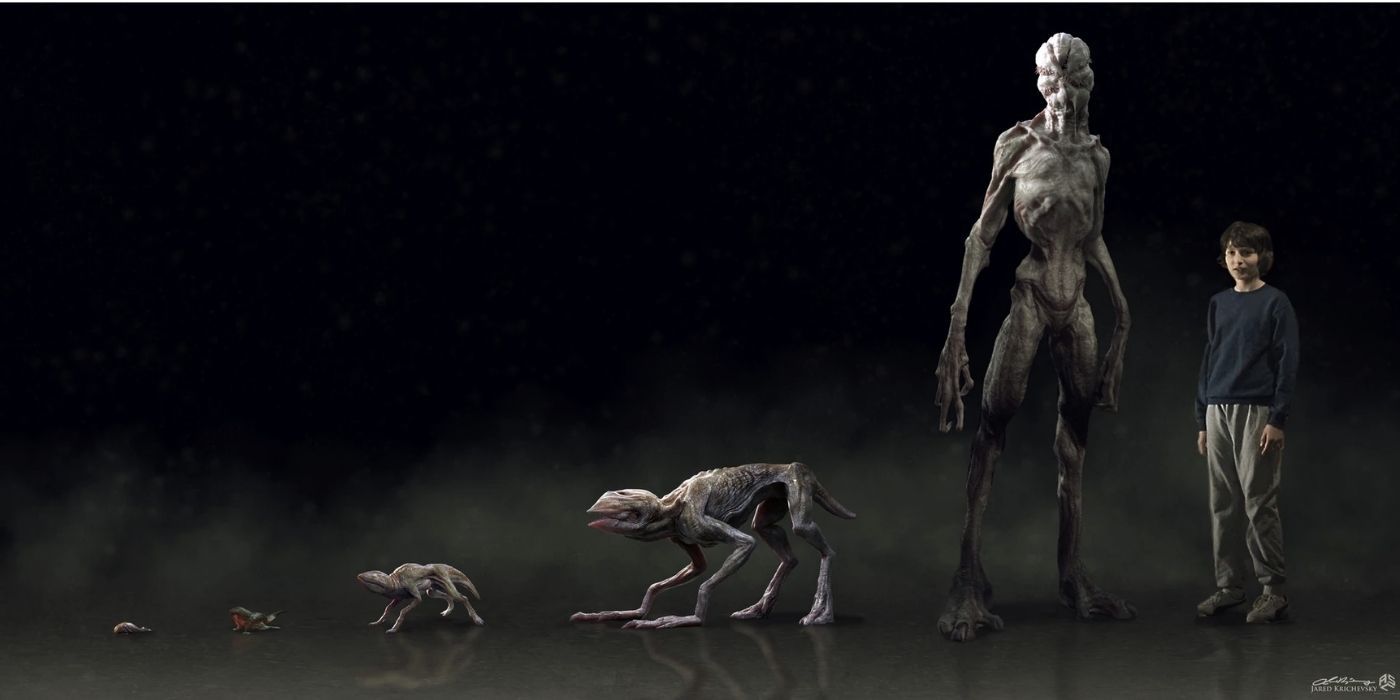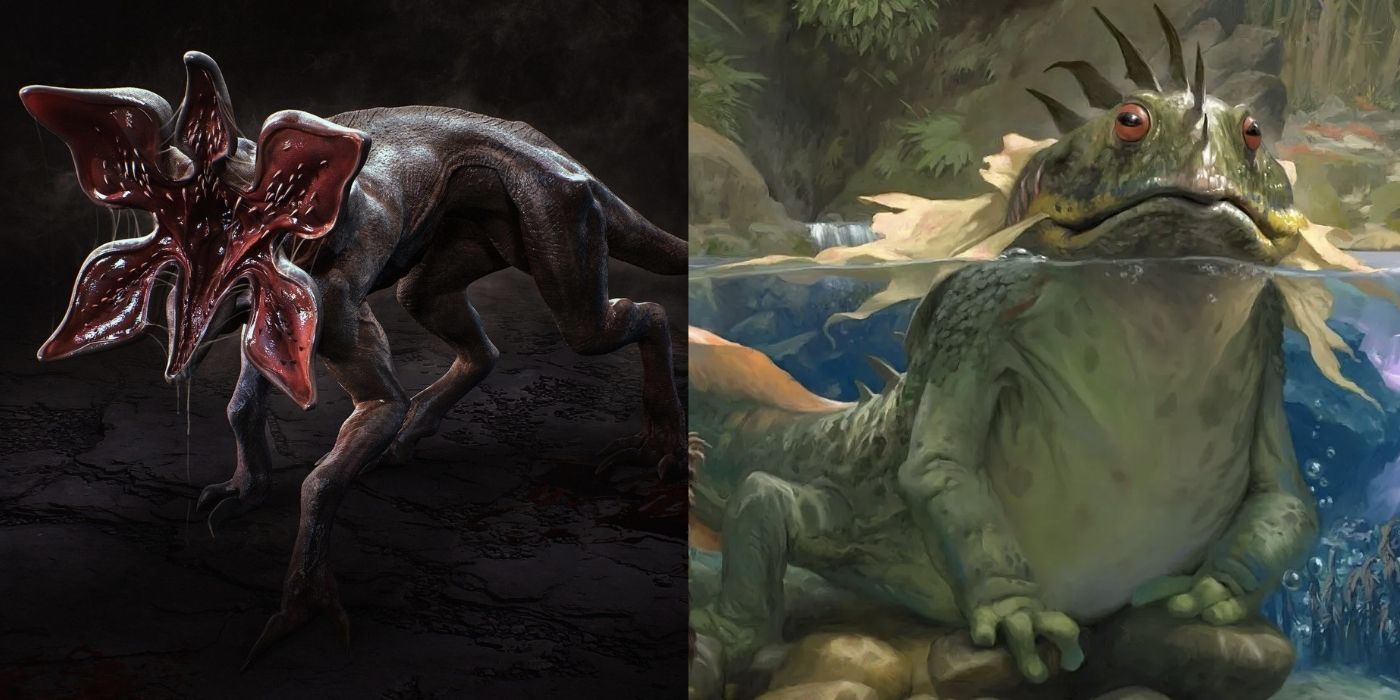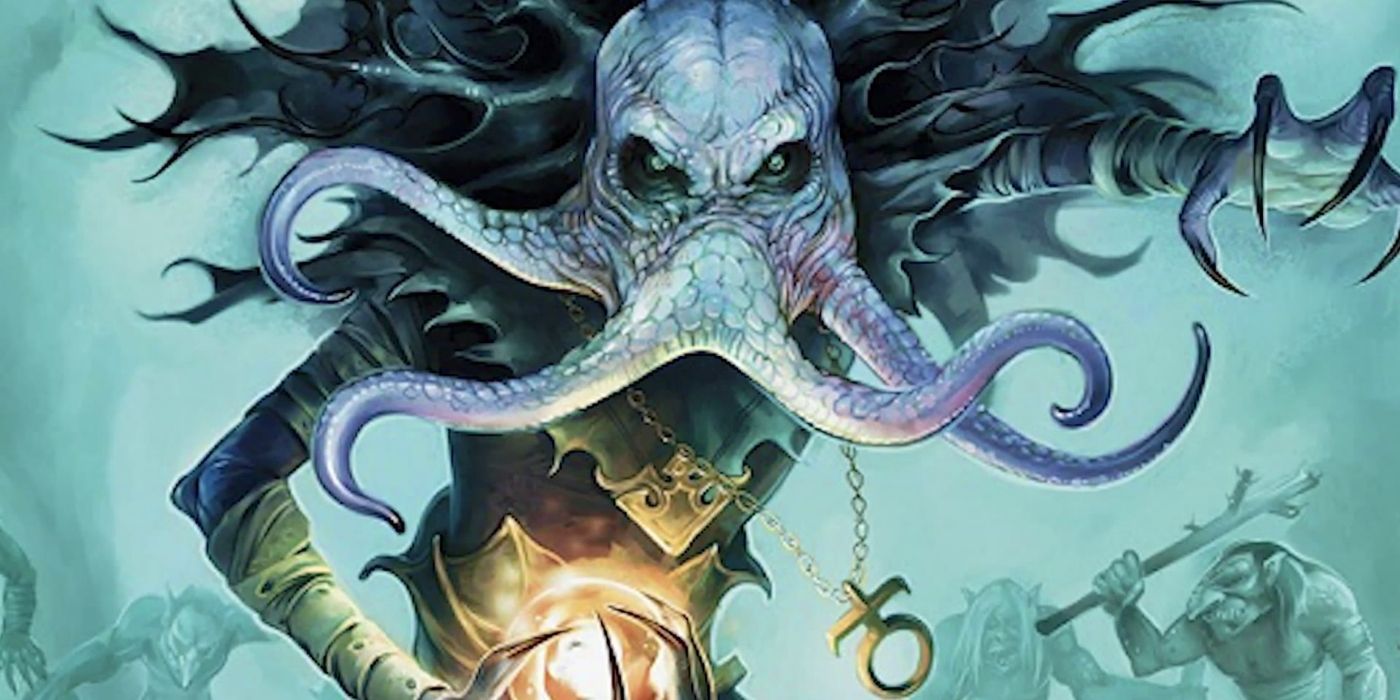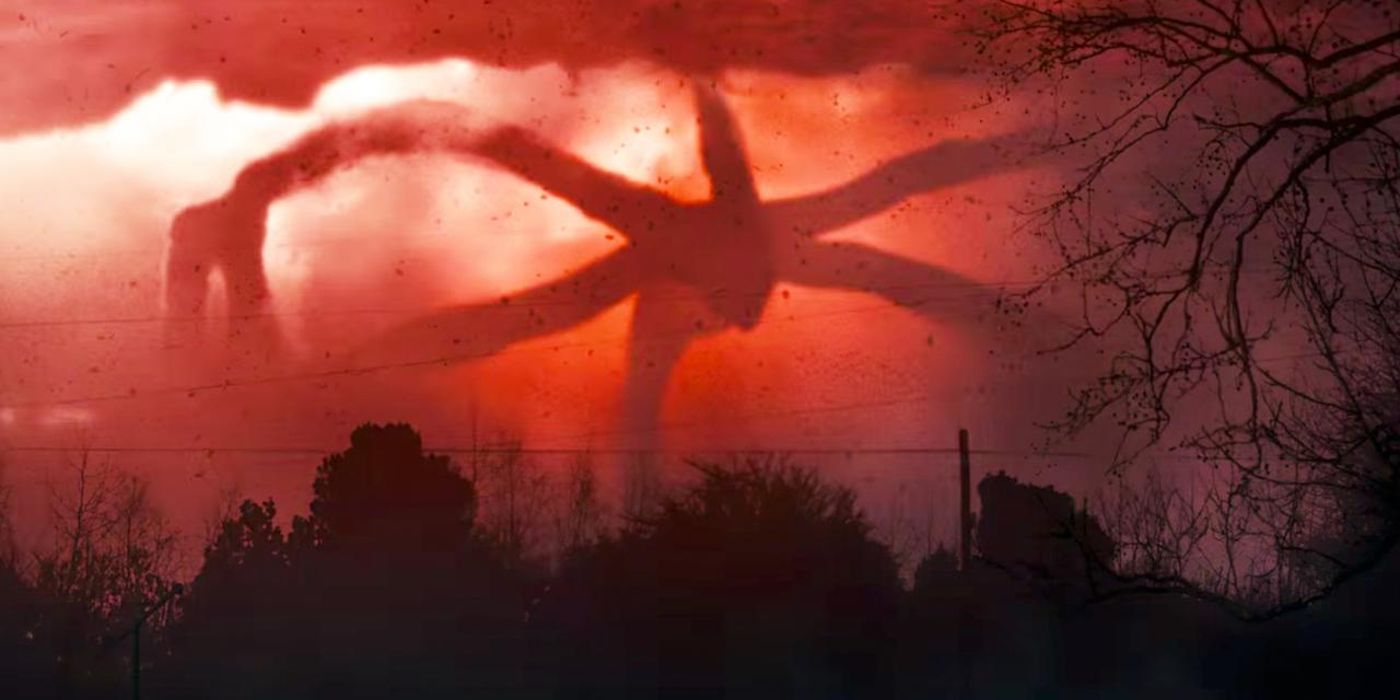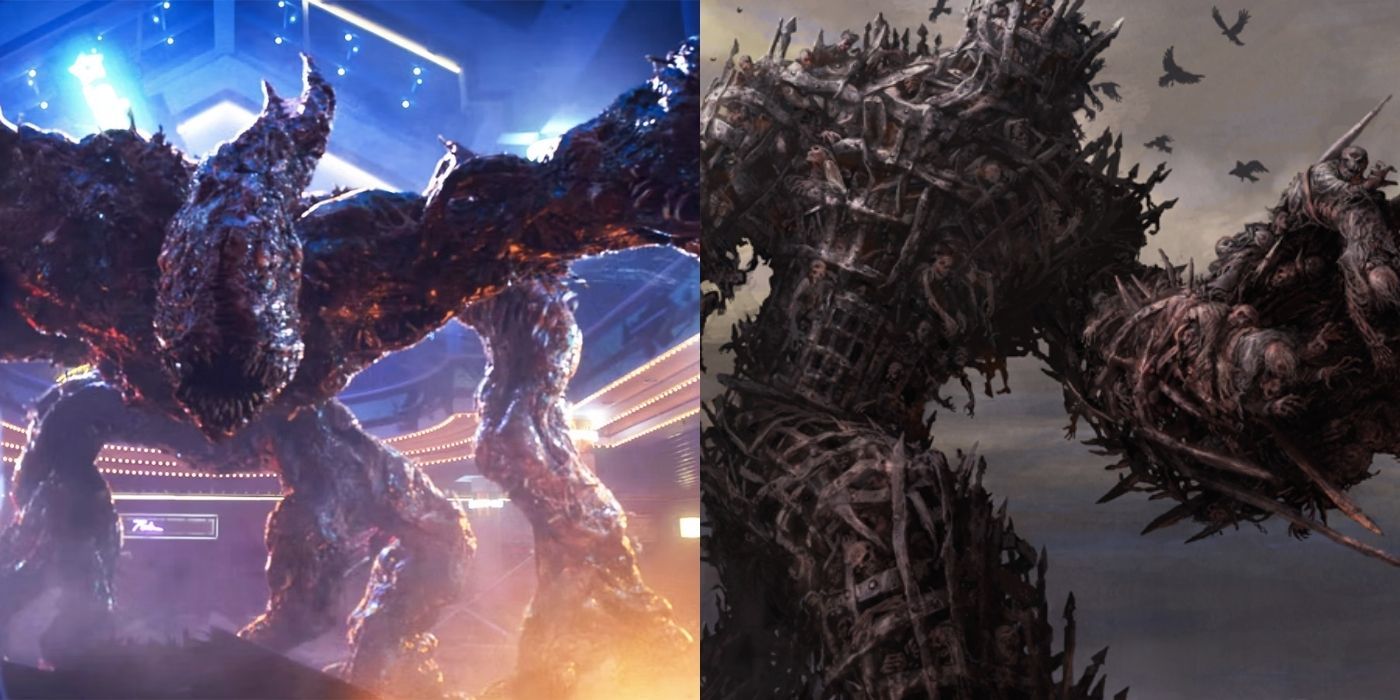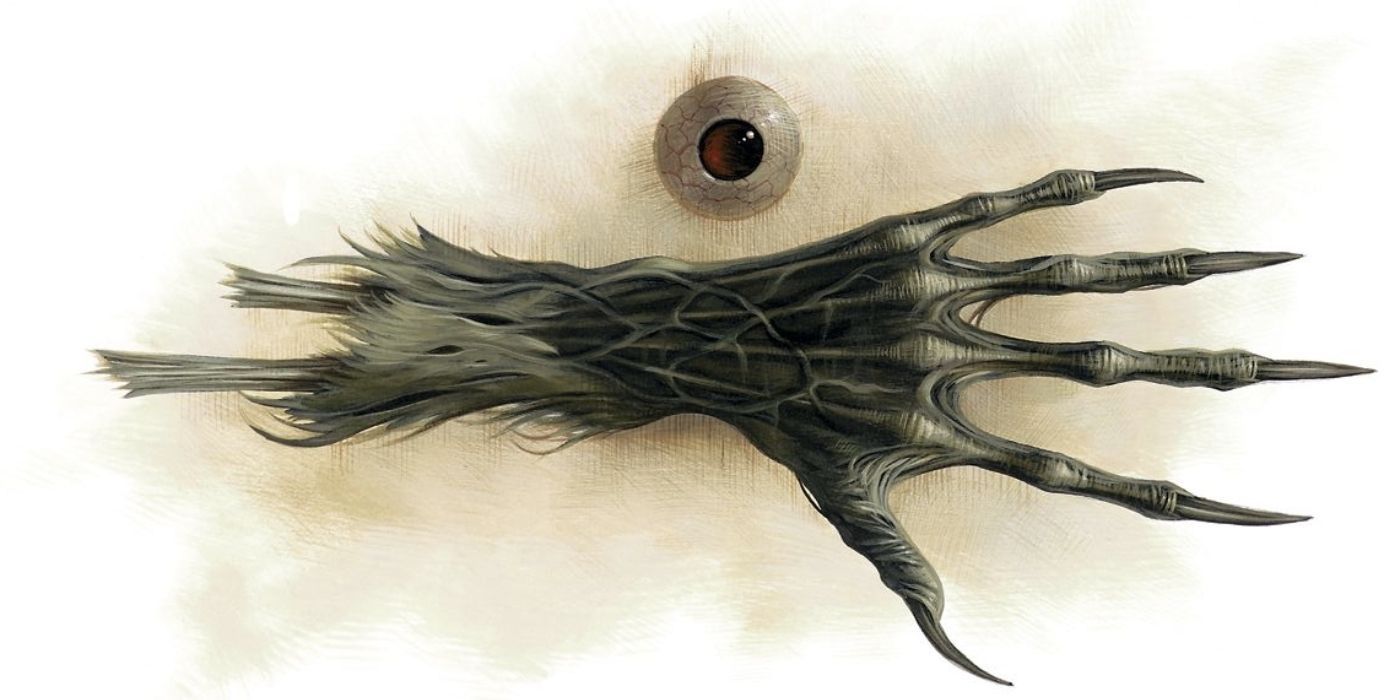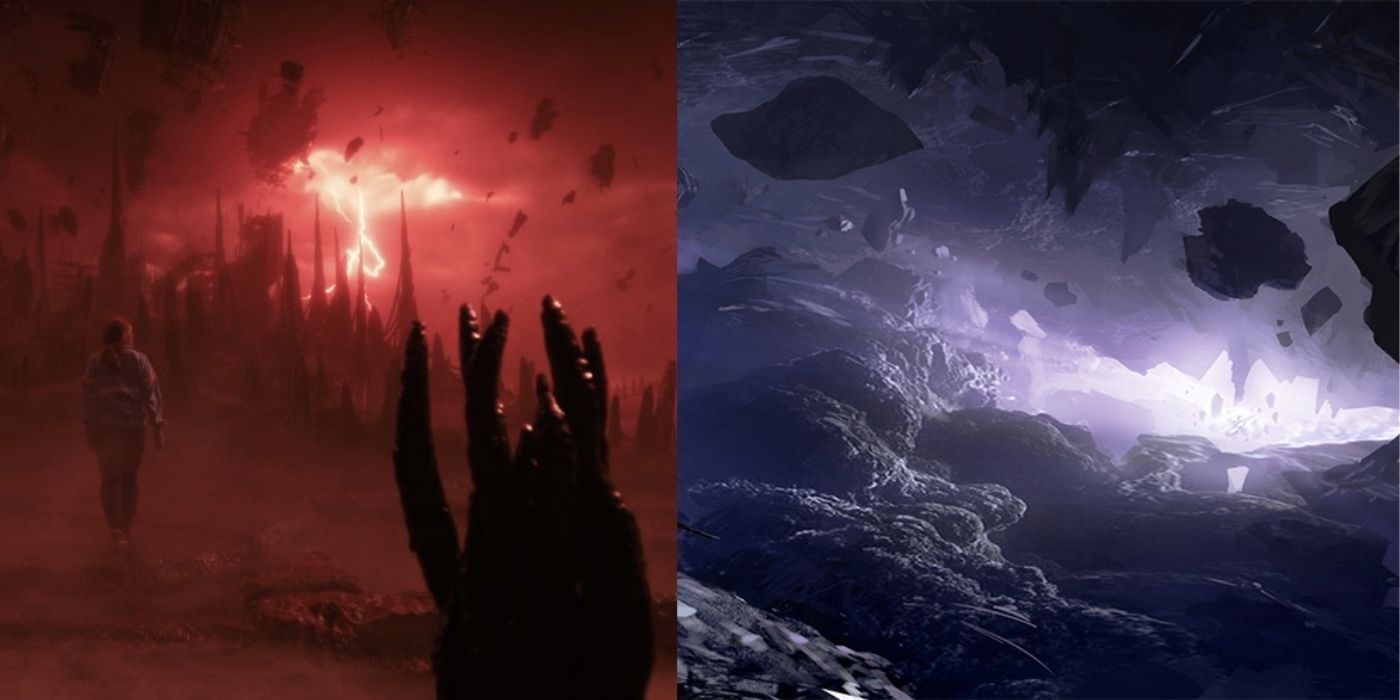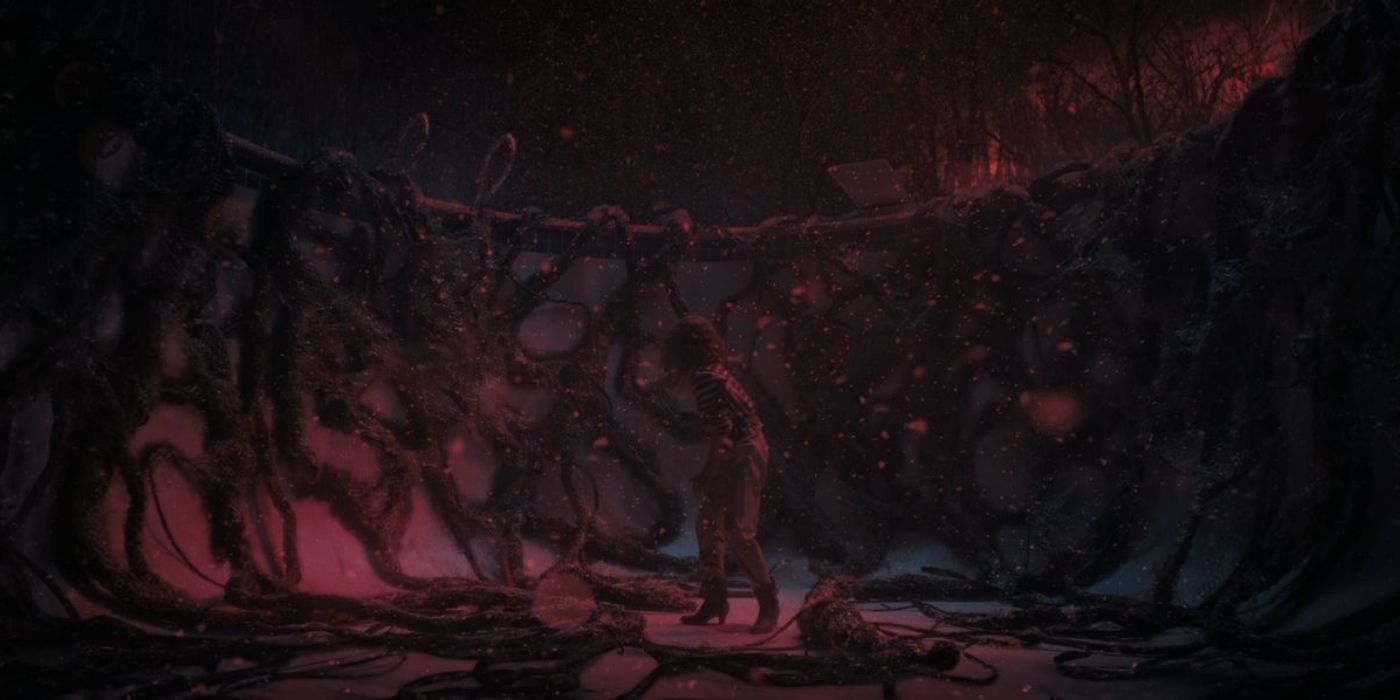Stranger Things season 4 left fans with a slew of questions and theories regarding the future of Hawkins. Thanks to the mind-blowing biography that was illustrated by Vecna, the crew and audiences everywhere have a more complete understanding of the villains that run rampant in the Upside-Down. The show is ripe with symbolism and clues that allude to the monsters and the roles they will play in the fate of Hawkins.
As the theme of comparing the Stranger Things monsters to Dungeons & Dragons villains continues, fans can have a deeper understanding of their origin, abilities, and desires. Each villain correlates to a D&D nightmare that is intended to weaken and destroy any victim that comes in their presence. Luckily, the Stranger Things characters have a basic understanding of these villains and their D&D origins which boosts their chance of success.
Demogorgon - Prince Of Demons
The Demogorgon received its name in Stranger Things when Eleven used the miniature statue to help the crew realize that Will was being hunted. It is drawn to the blood of its victims, making humans, animals, and other monsters their typical prey. This creature is the first comparison of the monsters to villains in D&D, which is continued with the other terrors as well.
The Demogorgon in the D&D universe is an 18-foot-tall entity with two ape-like heads known as the Prince of Demons. The heads are named Aameul and Hethradiah and have clashing personalities with one commonality, which is a love of destruction and revenge. Players do not want to cross the Demogorgon who usually appoint their dirty work to one of their terrifying minions.
Demogorgon's Physical State
The most hated villains in Stranger Things tend to have the most potential to oppose good. The Demogorgon is notorious for wreaking havoc and terrorizing its victims. As it grows through the key phases, the monster gains power, strength, and desire to mutilate its prey. The varying stages of the Stranger Things Demogorgon are colorfully portrayed throughout the series.
D&D's Demogorgon is only one extremely powerful reptilian being. The Prince of Demons is a lower-class deity in the Abyss which is the place where the demons run rampant. The key difference between the show's representation and the original is the physical appearance and abilities, though they both share the horror factor quite effectively.
Demodogs - Pollywog
The adorable creature that Dustin befriended and named Dart was a Demogorgon in one of its earliest phases. Before the monster becomes a carnivore, the Demodogs and the phases that preceded it are derived from D&D's Pollywog. A Pollywog, similar to Demodog is in the beginning stage of the adult form known as a Grummite.
There are no references to the connection besides the episode name and similar growth stages. The Grummite race is more civilized than the Demogorgons in Stranger Things. They form amphibious colonies complete with tribal leaders, warriors, and craftsmen, unlike the Demogorgon which is portrayed as a hive mind with the simple intent to kill.
Mindflayer's D&D Origin
In D&D lore, the Mind Flayer's proper name is the Illithed, which is a unique and terrifying race of humanoid beings mixed with octopi. Their exact origin is a mystery, but what is clear is the mutual fear and hatred that all other species have for them. Mind Flayers are deceitful, power-hungry, homicidal monsters that have psionic abilities.
For centuries in D&D lore, the Illithed has risen to immense power by enslaving and feeding off of lower life-forms. They are not capable of human emotion and believe wholly that knowledge is power. Like in Stranger Things, Mind Flayers never stop their quest to find humans, demons, or other monsters to consume minds in order to gain power.
Mindflayer - Stranger Things Comparison
The Mind Flayer is famously known for killing Billy in one of Stranger Things's most tragic death scenes. Though the cinematic take on the fictional character is equally as horrifying as its namesake, the immense dark cloud monster strongly contrasts in appearance with the D&D version.
Both Mind Flayers capitalize on their telepathic abilities to toy with the minds of their prey. They also share the power to cross between dimensional planes and can sense the thoughts, desires, and motives of any creature around them. Stranger Thing's Mind Flayer is a hive mind controlling all the other creatures in the Upside-Down which sets it apart.
Spider Monster - Cadaver Colossus
Though the Spider Monster in Stranger Things has a different origin than Cadaver Colossus, the two have the greatest similarities out of all D&D monsters. The Spider Monster was created by the Mind Flayer as it began to manipulate small animals and eventually humans by melting their remains to create a physical presence for itself in Hawkins.
Cadaver Colossus is a terrifying being that is usually over 100 feet tall. Its mass is made up of hundreds of corpses, and can only be brought to life through intense necromancy, alchemy, and blood sacrifice. The master of Cadaver Colossus has complete control over the monster, yet there is guaranteed to be unplanned destruction along the way.
Vecna's D&D Origin
The latest season of Stranger Things brought countless fan theories regarding the correlation to D&D. Vecna is guaranteed to be one of the most powerful and fear-inspiring opponents, thanks to his namesake in D&D paving the way. In D&D, for centuries Vecna was only known as his remaining hand and eye until he was able to regain a physical form and his powers.
Vecna began his life as an evil human King who throughout trial and error transformed into a diety due to his immense power. He feared mortality, so he made every effort to become practically indestructible. He had an impressive list of abilities that included the command to paralyze opponents with a touch, spell casting, disease immunity, and he could alter reality at will.
Vecna - Stranger Things Comparison
Vecna made an intense introduction to Stranger Things, yet despite his powerful presence, he is a character that will most likely die in Stranger Things season 5. He seems to have no weakness which is eerily similar to his D&D counterpart. The two beings are reincarnated or altered forms of their previous selves, with evident physical differences.
Vecna uses mind control to manipulate his victims like puppets, discovering their weaknesses with ease. Beyond having intense powers of sensory perception, he is immune to disintegration which was exhibited in One's transformation in Vecna. Stranger Things highlights Vecna's power as being mainly telepathic like Eleven's, and less spell oriented.
The Upside-Down - D&D's Abyss
Vecna illustrated for Eleven just how the Upside-Down came to be and how he gained omnipotence in the dimension. The chaotic chasm is extremely similar to the Abyss in D&D which is the birthplace of all demons. Both fearful locations harbor the evilest beings in an environment where they roam and reign at their discretion.
The Abyss in D&D is the home to the Demogorgon which is accurately portrayed in Stranger Things. Any human who enters is likely to resort to madness. The consistent visits to the Upside-Down for the crew have brought horror and trauma to the travelers that leave a residual effect on the surroundings. It's safer in D&D and Hawkins to keep the different realities separate
Vecna's Vines
The vines that pollute the Upside-Down are all connected to the hive mind which gives a significant advantage to Vecna. There is no place in his realm that an outsider can linger without his knowledge. Vines in D&D are used for similar reasons, which is to protect and guard a creature or location.
Vinelings, though not as formidable on their own, have the ability to merge with other vines to create a massive guardian. Vecna's use of vines in the Upside-Down is a more calculated attempt in which he has full control of them to both assess and weaken trespassers in their journey. Unlike Vinelings who have their own will, Vecna manipulates the vines himself as the sole puppet master.

